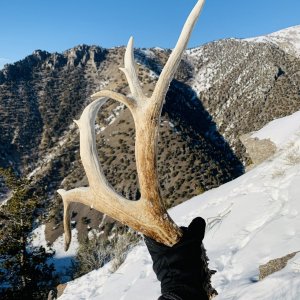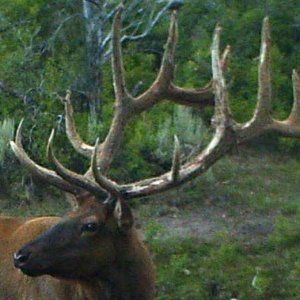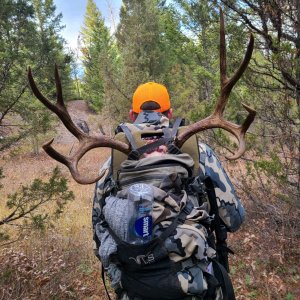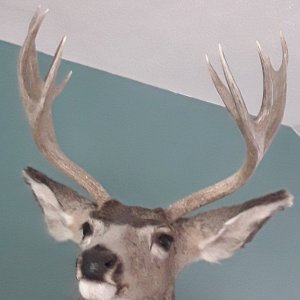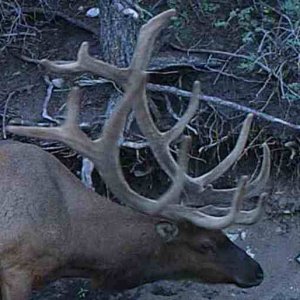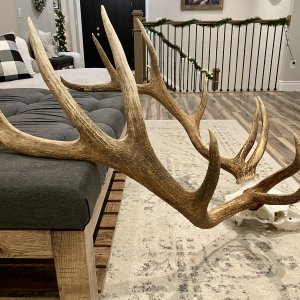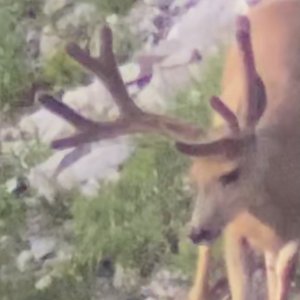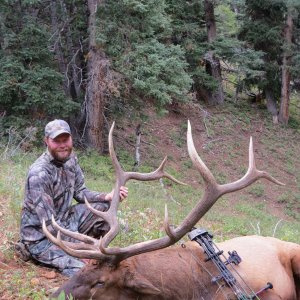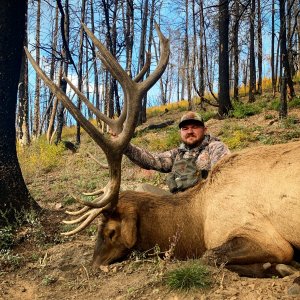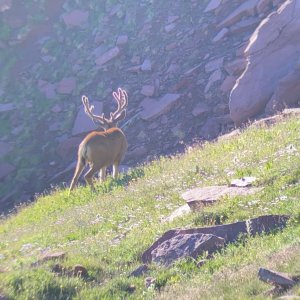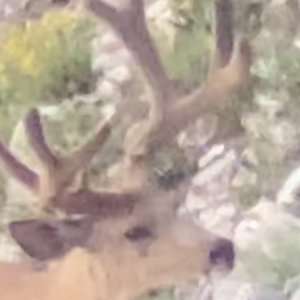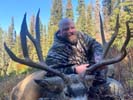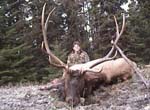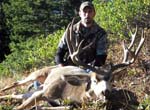M
MULEY204
Guest
I WAS SENT THIS ARTICLE VIA E-MAIL AND THOUGHT IT WAS A GOOD READ . I THINK THE AUTHOR HAS HIT THE NAIL RIGHT ON THE HEAD.
The Predator Death Spiral?c
Nov 22 2011
The Western States management systems are not set up to handle uncontrolled, "Super Predators".
We?fre continuing to see an alarming trend in Western wildlife management. I am calling it the ?gPredator Death Spiral.?h The underlying cause of this phenomina is when a wildlife agency attempts to hide or ?gpad?h their big game population estimates when over predation begins to take hold. This in turn creates a downward spiral that cannot easily be avoided, and is often not even noticed until the state hits both a financial and PR rock bottom. Idaho was the first state to hit the wall with the ?gSpiral?h followed by Montana and now Wyoming has begun to slip into the Spiral?fs grip. The wolf situation has caused these three Western states to slide down the jagged slope of diminishing herds, shrinking revenues and bad PR among their customers and financial lifeline?cout-of-state hunters.
The details of the spiral start out very subtle. The wolves, cougars and grizzly bears start to take a few more elk and moose each year as their unchecked populations grow and expand. The state does not react at first with cuts in the tag quotas. This would mean a decrease in revenue that would have to be met with either more tags somewhere else or even worse, budget cuts. So they do what most Government agencies would do in this situation?cnothing! After a few years of turning a blind eye to the situation a bad winter like the winter we had in 2006 and 2011 hit and further accelerated the problem. But, the bad winter was even worse than imagined from a wildlife management perspective. The increased snowpack and cold temps caused far more than the usual winter kill. The predators did extremely well because of the increased snowpack that gathered the herds even tighter than usual, on heavy snow accumulations that created a wolves dream come true scenario. A concentrated food source stuck in a snow bank that cannot escape?cperfect. After the long cold winter is over the elk and deer that did survive go into the spring in tough shape. Many of the cows and does have aborted their young in order to survive.
The post winter mortality counts come back into the department as an alarming number. But budgets have to be met. So being ever optimistic the state decides to give the remaining quotas just one more year to see if they might bounce back. After-all, the counts could have been flawed, there is no way we could have lost that many big game assets in one year, right?
The next fall the hunters are complaining, the harvest stats are coming back very low and things are not looking good on the PR front. Many non-resident hunters are threatening not to apply the following year and the outfitters are starting to make their voices heard.
The state reacts, and cuts the elk tags inside the wolf and winter zones. But the money has to be made up somewhere, after all a few hundred non-resident elk tags equate to big money. So the state moves to increase the quotas on elk outside the wolf zone and increase the deer and antelope tags substantially in an effort to compensate for the loss in revenue.
As wolves continue to take their toll, state Game and Fish Departments struggle to make their budgets as big game populations plummet and demand for non-resident licenses crash.
A second harsh winter strikes and wipes out the antelope and deer herd excesses. Things are looking bad, but the state budgeteers don?ft give up easily. Someone recommends the idea of raising license costs to all hunters, after all supply and demand economics formulas say a non-resident elk tag should go for over $2,500. But the resident tag increases get shot down by the commission but everyone likes the idea of sticking to the non-resident hunter a bit more. They can afford it, have you seen how much a house in California is worth? (pre-2008 of course). The following fall the hunters don?ft see near the game they did even the previous year. Things are getting bad. Thanks to the internet the word gets out and many of the non-resident hunters move their camps and non-resident dollars to Colorado and New Mexico to hunt elk and deer.
The next thing the state knows, they are sitting on millions of dollars worth of unclaimed and unwanted non-resident tags. Now with the wildlife resource in shambles and a multi-million dollar budget shortfall the state is finally forced to wake up and smell the coffee. This isn?ft the 1970??s?cit?fs no surprise to us that a non-resident hunter who pays over $1,000 for an elk tag expects a good elk hunt, why should it come as a surprise to the state Game and Fish Commission? But it does. What the state fails to realize is, that once they began to charge that kind of money for tags and preference points they in affect gave up the option to simply brush it off as a ?gbad winter, try again next year?h excuse that worked so well in the past. In the information age non-resident hunters no longer accept excuses easily.
This is the bottom. A state is stuck to come clean and admit they are in a real hole. They don?ft have the wildlife any longer to support their budgetary needs and their customers know it. This is the type of situation where a little fudge in numbers here and there has created a beast that cannot be controlled and is getting bigger, badder and uglier every year until the bottom is hit.
Why? Because it would mean that the states would have to admit to contributing to their own financial demise. Some Western Fish and Game Departments have in fact become a wolf in sheep?fs clothing to their constituants. Some inside the departments have, although reluctantly, in some cases went along with the Federal Government?fs master plan to re-introduce super predators back into the ecosystem to eventually control big game herds without the use of hunters. It?fs almost as if the state neglected to realize that this would, in fact, slit their own throats by gutting their departments of the necessary funding to run.
And this is not just a Wyoming, Montana and Idaho problem. Wolves have already begun to take hold in Washington, Oregon and Utah. Nevada, and Colorado are certainly next. And for all of you midwest whitetail hunters out there, sorry, your not safe either. The government has devised a plan to expand the Mexican wolf North from Arizona and New Mexico into Oklahoma, Kansas, Iowa, North and South Dakota and Nebraska to connect with the upper midwest wolf populations in Minnesota and Wisconsin. This would give super predators a way to control whitetail deer populations minus the use of hunting as a management tool.
This is a critical situation but all is not lost yet. There have been huge strides made in the recent wolf debate and wolves are starting to be controlled now in Montana and Idaho. We all as hunters need to keep pressure on our politicians and state agencies to make sure they do the right thing for our wildlife. We pay them to manage our wildlife resource in a responsible manner, make them earn their money. Taking the easy way out is not good enough. They need to do better, our big game wildlife resource depends on it.
The Predator Death Spiral?c
Nov 22 2011
The Western States management systems are not set up to handle uncontrolled, "Super Predators".
We?fre continuing to see an alarming trend in Western wildlife management. I am calling it the ?gPredator Death Spiral.?h The underlying cause of this phenomina is when a wildlife agency attempts to hide or ?gpad?h their big game population estimates when over predation begins to take hold. This in turn creates a downward spiral that cannot easily be avoided, and is often not even noticed until the state hits both a financial and PR rock bottom. Idaho was the first state to hit the wall with the ?gSpiral?h followed by Montana and now Wyoming has begun to slip into the Spiral?fs grip. The wolf situation has caused these three Western states to slide down the jagged slope of diminishing herds, shrinking revenues and bad PR among their customers and financial lifeline?cout-of-state hunters.
The details of the spiral start out very subtle. The wolves, cougars and grizzly bears start to take a few more elk and moose each year as their unchecked populations grow and expand. The state does not react at first with cuts in the tag quotas. This would mean a decrease in revenue that would have to be met with either more tags somewhere else or even worse, budget cuts. So they do what most Government agencies would do in this situation?cnothing! After a few years of turning a blind eye to the situation a bad winter like the winter we had in 2006 and 2011 hit and further accelerated the problem. But, the bad winter was even worse than imagined from a wildlife management perspective. The increased snowpack and cold temps caused far more than the usual winter kill. The predators did extremely well because of the increased snowpack that gathered the herds even tighter than usual, on heavy snow accumulations that created a wolves dream come true scenario. A concentrated food source stuck in a snow bank that cannot escape?cperfect. After the long cold winter is over the elk and deer that did survive go into the spring in tough shape. Many of the cows and does have aborted their young in order to survive.
The post winter mortality counts come back into the department as an alarming number. But budgets have to be met. So being ever optimistic the state decides to give the remaining quotas just one more year to see if they might bounce back. After-all, the counts could have been flawed, there is no way we could have lost that many big game assets in one year, right?
The next fall the hunters are complaining, the harvest stats are coming back very low and things are not looking good on the PR front. Many non-resident hunters are threatening not to apply the following year and the outfitters are starting to make their voices heard.
The state reacts, and cuts the elk tags inside the wolf and winter zones. But the money has to be made up somewhere, after all a few hundred non-resident elk tags equate to big money. So the state moves to increase the quotas on elk outside the wolf zone and increase the deer and antelope tags substantially in an effort to compensate for the loss in revenue.
As wolves continue to take their toll, state Game and Fish Departments struggle to make their budgets as big game populations plummet and demand for non-resident licenses crash.
A second harsh winter strikes and wipes out the antelope and deer herd excesses. Things are looking bad, but the state budgeteers don?ft give up easily. Someone recommends the idea of raising license costs to all hunters, after all supply and demand economics formulas say a non-resident elk tag should go for over $2,500. But the resident tag increases get shot down by the commission but everyone likes the idea of sticking to the non-resident hunter a bit more. They can afford it, have you seen how much a house in California is worth? (pre-2008 of course). The following fall the hunters don?ft see near the game they did even the previous year. Things are getting bad. Thanks to the internet the word gets out and many of the non-resident hunters move their camps and non-resident dollars to Colorado and New Mexico to hunt elk and deer.
The next thing the state knows, they are sitting on millions of dollars worth of unclaimed and unwanted non-resident tags. Now with the wildlife resource in shambles and a multi-million dollar budget shortfall the state is finally forced to wake up and smell the coffee. This isn?ft the 1970??s?cit?fs no surprise to us that a non-resident hunter who pays over $1,000 for an elk tag expects a good elk hunt, why should it come as a surprise to the state Game and Fish Commission? But it does. What the state fails to realize is, that once they began to charge that kind of money for tags and preference points they in affect gave up the option to simply brush it off as a ?gbad winter, try again next year?h excuse that worked so well in the past. In the information age non-resident hunters no longer accept excuses easily.
This is the bottom. A state is stuck to come clean and admit they are in a real hole. They don?ft have the wildlife any longer to support their budgetary needs and their customers know it. This is the type of situation where a little fudge in numbers here and there has created a beast that cannot be controlled and is getting bigger, badder and uglier every year until the bottom is hit.
Why? Because it would mean that the states would have to admit to contributing to their own financial demise. Some Western Fish and Game Departments have in fact become a wolf in sheep?fs clothing to their constituants. Some inside the departments have, although reluctantly, in some cases went along with the Federal Government?fs master plan to re-introduce super predators back into the ecosystem to eventually control big game herds without the use of hunters. It?fs almost as if the state neglected to realize that this would, in fact, slit their own throats by gutting their departments of the necessary funding to run.
And this is not just a Wyoming, Montana and Idaho problem. Wolves have already begun to take hold in Washington, Oregon and Utah. Nevada, and Colorado are certainly next. And for all of you midwest whitetail hunters out there, sorry, your not safe either. The government has devised a plan to expand the Mexican wolf North from Arizona and New Mexico into Oklahoma, Kansas, Iowa, North and South Dakota and Nebraska to connect with the upper midwest wolf populations in Minnesota and Wisconsin. This would give super predators a way to control whitetail deer populations minus the use of hunting as a management tool.
This is a critical situation but all is not lost yet. There have been huge strides made in the recent wolf debate and wolves are starting to be controlled now in Montana and Idaho. We all as hunters need to keep pressure on our politicians and state agencies to make sure they do the right thing for our wildlife. We pay them to manage our wildlife resource in a responsible manner, make them earn their money. Taking the easy way out is not good enough. They need to do better, our big game wildlife resource depends on it.

